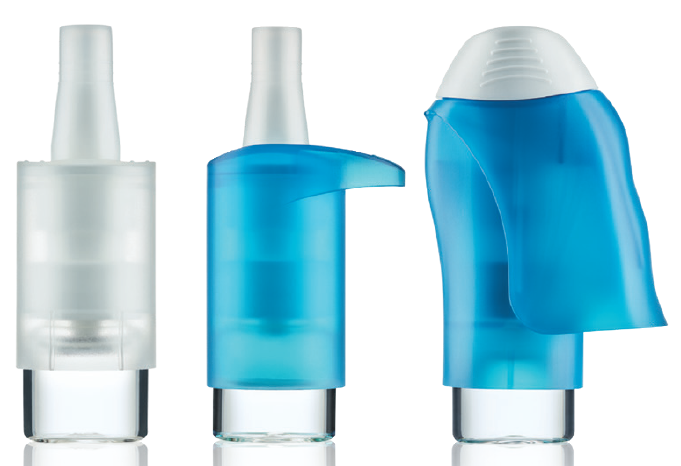To Issue 143
Citation: Kraus R, “Groundbreaking Trend for Preservative-Free Multidose Eye Drops in the US”. ONdrugDelivery, Issue 143 (Mar 2023), pp 30–32.
Rouven Kraus discusses the increasing trend towards preservative-free formulations in ophthalmic drug delivery and the challenges presented by regulatory demands on new drug products in the space.
INTRODUCTION
The ophthalmic drug market is expected to experience significant growth over the coming years due to the increasing prevalence of ophthalmic disorders. This is primarily attributable to factors such as increased life expectancy leading to ageing populations, increased air pollution and the rise in the number of patients diagnosed with diabetes. According to the WHO, approximately 2.2 billion people suffer from some form of visual impairment worldwide.1 Several market research reports predict a compound annual growth rate (CAGR) for the ophthalmic market of almost 8% from 2022 to 2030, which will reach around US$68.9 billion (£57.3 billion) by 2030.2
Topically delivered eye drops are one of the most popular dosage forms for treating ophthalmic diseases. With a revenue share of around 40%, North America dominates the global market. According to available data, more than three million Americans are affected by glaucoma and only half of those are aware that they are affected. The National Eye Institute predicts that between 16 million and 49 million Americans suffer from dry eye symptoms, which accounts for 5%–15% of the population.3
There are several eye drop medications available to treat glaucoma, dry eye and other ocular diseases, with a multitude of different delivery technologies. Single-dose vials are designed to dispense a single specified amount of medicine, and then be discarded. Of course, this leads to a lot of packaging waste. Furthermore, due to an unclean tear-off edge, there is a risk of injury to the eye during application.
Three-piece-droppers are conventional multidose bottles for preserved medications. Their squeeze mechanism can lead to an overdosing if the patient squeezes too hard and, towards the end, the force required to actuate them becomes higher and higher. Moreover, unlike single-dose vials, they are not suitable for use with preservative-free medications. Regulatory bodies recommend the use of preservative-free delivery technologies to protect the ocular surfaces from any side-effects that can be caused by common preservatives, such as benzalkonium chloride. Preservatives are known to be associated with toxic side effects, such as dry eye symptoms and trabecular meshwork degeneration.
“This recommendation by regulatory authorities has led ophthalmic manufacturers to a groundbreaking trend – switching their eye drops to use a PFMD delivery technology.”
THE SWITCH TO PRESERVATIVE-FREE
This recommendation by regulatory authorities has led ophthalmic manufacturers to a ground breaking trend – switching their eye drops to use a preservative-free multidose (PFMD) delivery technology. One of the first PFMD ophthalmic drugs in the US has been Allergan’s (Dublin, Ireland) blockbuster product Restasis® (cyclosporine) for the treatment of chronic dry eye. While most eye drop-based medications are still offered in a preserved form, there is now a significant trend towards the use of preservative-free delivery platforms.
Industry and healthcare experts in the US are taking Europe as a pioneering example of this change. There, the switch to preservative-free medications took place more than two decades ago. Brands such as Ursapharm’s (Saarbrücken, Germany) Hylo-COMOD® (sodium hyaluronate) eye drops for the treatment of dry eye or Bausch+Lomb’s (Laval, Canada) Vizilatan (latanoprost) for glaucoma have been successfully launched on the market. Nowadays the majority of multidose eye drops in Europe come in preservative-free packaging. Looking at investigational new drug applications (INDs) registered at the US FDA, most new product developments in the US now also consider a preservative-free delivery technology for their ophthalmic drug product.
REGULATORY CHALLENGES OF COMBINATION PRODUCTS
The FDA has defined regulations for the development of drug-device combination products, which are applicable to most eye drop medications (Figure 1). A combination product is a product composed of any combination of a drug and another constituent part – the device – which can come prefilled by the manufacturer or simply co-packaged in the same box.4

Figure 1: New regulations are making it crucial for applicants to select a device manufacturer with regulatory knowledge.
“Aero Pump offers device manufacturing services with a full regulatory understanding for its well-known 3K system.”
Being classified as a combination product challenges device manufacturers to fulfil the requirements outlined in 21 CFR 820.30 for design controls. As such, manufacturers of the device part of the combination product must record a device history file – a compilation of documentation providing evidence that the design was developed in accordance with the approved design plan and its requirements. Due to these new regulations, it is crucial for the applicant of the finished product to select a device manufacturer that can support them through the entire regulatory pathway.
Aero Pump offers device manufacturing services with a full regulatory understanding for its well-known 3K® system – a pump-driven delivery technology that applies a single metered drop per activation. Custom-fit regulatory packages support the application during the individual stages of the submission process.
AERO PUMP’S PRESERVATIVE-FREE OPHTHALMIC MULTIDOSE SYSTEM

Figure 2: The ophthalmic multidose system in different sleeve designs.
Aero Pump’s 3K pump eyedropper is well-established and has been on the market since its first product launch in 2006. It is the only eyedropper based on a purely mechanic pump technology that offers a metered dose. Special germ-reducing components inside the 3K system ensure the microbiological safety of the device. The 3K pump is used in numerous approved over-the-counter and prescription drug products.
Various patient-friendly actuation aids enable the convenient application of a drop into the eye. Aero Pump’s pharmaceutical customers can choose their preferred finger sleeve design, which can then be customised to meet the needs of the end user (Figure 2). Furthermore, the 3K system can be used with plastic or glass containers in various fill sizes, which is a particular advantage when attempting to reduce the interaction between the container and the product.
The 3K system delivers an accurate dose over the whole lifecycle of the product, with one metered drop per stroke. The actuation force of Aero Pump’s ophthalmic multidose system is stable and independent of the residual liquid inside the container. The device will be CE-marked to accelerate the approval process of the drug product, and Aero Pump offers comprehensive support for a successful regulatory submission process.
REFERENCES
- “Blindness and vision impairment”. WHO, Oct 2022.
- “Ophthalmic Drugs Market – Global Industry Analysis, Size, Share, Growth, Trends, Regional Outlook, and Forecast 2022-2030”. Precedence Research, Nov 2022.
- “Eye-Drop And Lubricants Market By Product Type, By Application, By Geography – Global Opportunity Analysis & Industry Forecast, 2022-2027”. IndustryARC, 2022.
- “Regulation (EU) 2017/745 Article 117: Drug-device combination products application process”. EMA, Apr 2017.

